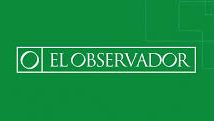One of the first women to study computer science at Uruguay’s University of the Republic, Ida Holz graduated almost 20 years before the country had widespread Internet access.
Despite being introduced to computers via Fortran punch cards, Holz went on to become one of Uruguay’s most vocal advocates for email development and Internet access expansion in her home country in the 1980s and early 1990s. In a Spanish language interview with El Observador recently, she noted:

“When we began with the Internet here, we looked at each other sideways,” she said. “I remember the lawyers told us that the Internet couldn’t happen here because there were no owners, no regulations. They kept assuring us it would be anarchy. But it happened, in a way that nobody expected.
“We don’t know what’s going to happen within 10 years, but the world advances and the speed with which it has changed in these last 20 years is impressive.”
The Internet Hall of Fame has translated into English the full interview from El Observador below.
Ida Holz: The Uruguayan of the Internet
There once existed a world without Internet. For Uruguay, the last day of that era was December 2, 1988, when the Institute of Computer Science (Instituto de Computación) of the College of Engineering of the University of the Republic (Udelar) established its first stable email connection with the rest of the world. This was seven years before Uruguayan society would formally get to know the network of networks. At the forefront of this challenge was a woman who has been called the mother of the Internet in Uruguay: Ida Holz.
At the beginning of the 1970’s, it was rare that a woman would study computer science. Ida and three classmates were the first women in the class. In those times, she attended basic courses from IBM in which she learned Fortran, a programming language linked with computer science. “I remember that in the department, we had an enormous computer; one of those that used a punch card. They had a hard drive that saved a fraction of what today’s can save,” she commented in an interview with the magazine Seisgrados.
It was in Mexico, during her exile, that she was able to buy herself her first personal computer, a Commodore. “It connected to the television set and it didn’t have a hard drive. On that PC I made little programs for adding, subtracting, multiplying and dividing for my children. When they made a mistake, the program would say to them, ‘Too bad! Do it again!’” It was 1980.
“When we began with the Internet here, we looked at each other sideways. I remember the lawyers told us that the Internet couldn’t happen here because there were no owners, no regulations, they kept assuring us it would be anarchy. But it happened, and in a way that nobody expected. We don’t know what is going to happen within 10 years, but the world advances and the speed with which it has changed in these last 20 years is impressive.”
Holz also prompted the Plan Ceibal, which she pointed to as “a great milestone” that “changes the ways of teaching.” On the 3rd of August 2013, she was inducted into the Internet Hall of Fame, an initiative of the organization Internet Society whose purpose is to remember the pioneers of the subject. She was the first Latin American woman to receive this honor. “I didn’t consider it anything special, just that it was part of my responsibility,” she said. She received it as recognition for Latin America. “They had to honor someone from the region and I was the oldest one,” she said to the press.
Once the process of exchanging email was “under control,” the communications were moved to the Central Services of Information Technology of Udelar; from there Holz supported the development of the Internet in the country such as it is today.
In 1990, the domain “.uy” was created, the connection with the United States began to be direct through the Uunet node and the node Dcfcen was established for traffic with Argentina. These connected at a rhythm of six and two times per day, respectively. One year later, the brand new Uruguayan Academic Network (RAU) boasted more than 30 nodes. Finally, the Internet was introduced to Uruguayan society in 1994.
Holz is also known for being one who, during the congress of Rio de Janeiro in 1991, opposed the notion that the United States and Europe could impose their authority in Latin America with regard to the nascent global network. Latin American academics drafted in one night the foundation of what was the First Forum of the Academic Networks of Latin America and the Caribbean. “That offended a lot of people,” she declared some time later.
This article is part of the special publication of El Observador, in honor of its 25 year anniversary.
